Featured Articles
Why is my laptop (or computer) so slow? At one point or another, a disgruntled remark made by almost every home and business IT user!
When our laptop and desktops are fast and responsive, it’s easy to take things for granted. But the moment they start to slow down to a sluggish speed — every click followed by a ponderous wait, or every startup followed by an inevitable 10-minute ‘warm up’ period — everyday IT can quickly become incredibly frustrating.
Time is valuable and life’s too short for slow devices. Fortunately, our engineers have over 20 years’ experience in device repairs, helping home and business users to enjoy tip-top performance from their laptops, desktops, smartphones and tablets.
One of the first things we’d look at is your hardware — is it old or new? The prime suspects when it comes to a slow-running device are the hard drive, followed by the processor and the RAM.
Regardless of your hardware, before you call our team to take a look, you might want to try some of these top tips…
How to speed up & fix a slow laptop, desktop or PC
Sick of your dawdling device? Before you decide to throw it away and fork out for an expensive, shiny new one, try a few of these free top tips for putting the rocket boosters under your computer’s performance and speed!
Restart your computer
The age-old advice from The IT Crowd — ‘have you tried turning it off and on again?’ — may go some way to solving your computer’s sluggishness and is the best place to start.
Many of us are in the habit of putting our devices into ‘sleep’ mode, rather than ever turning them off properly. Rebooting flushes your computer’s random access memory (RAM), clears temporary files, halts any tasks that are eating up processing power, can fix software functioning glitches and can also solve internet connection issues.
Whilst ‘sleeping’ can be helpful for picking straight back up with what you were working on, we’d recommend rebooting at least once a week to clear those computer cobwebs. The reboot button can be found by clicking the Start menu, Power and Restart.

Top tip technical difficulty rating: ⭐
Identify and close resource-hungry programs
Common causes of suddenly-slow Windows computers are programs that run without your knowledge, eating up your computer’s resource.
It’s not immediately clear that they’re working away in the background and gobbling up your computer’s usage, giving your device more to do and distracting it from the task you’d prefer it to focus on!
So, one of your first ports of call when attempting to speed up your computer is to discover and close any of these unnecessary resource-hungry programs.
Right-click the taskbar (usually at the bottom of your interface) and choose Task Manager (or hit control-shift-escape). The Processes tab should be open, where you can sort the programs by the amount of a particular resource they are consuming.
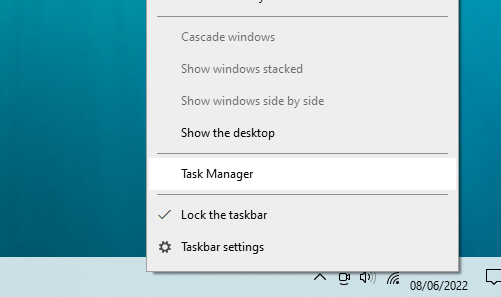

Any apps consuming a high percentage of your processing power and storage (and aren’t necessary) should ideally be ended. Select them in Task Manager and choose End task.
Closing apps that you aren’t using is good general practice for speeding up your everyday IT. Apps can be closed through the taskbar without having to go into Task Manager. Sometimes they can also hide in your system tray. Look for an upward-pointing arrow at the bottom right of your interface — right-click and close any you don’t think are important.
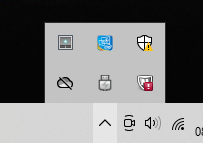
Top tip technical difficulty rating: ⭐⭐
Manage your startup programs
Perhaps the biggest culprit when it comes to a computer that’s grindingly slow to warm up are startup programs.
Many of these intensive apps can open and run automatically. As a result, they have the potential to make powering up your laptop or PC a rather painstaking experience — and you might not even notice that they’re open whilst you use your computer.
To manage which programs open up on startup, right click your taskbar (the bar usually at the bottom of your interface) and choose Task Manager (or hit control-shift-escape).
Navigate to the Start-up tab. Those that automatically boot up with your computer have the status ‘Enabled’ and are assigned an impact. Are there any unnecessary ones there? If so, select then press the Disable button.
Try to avoid tampering with those that look important — if you’re unsure, some Google research or a quick message to our team might be helpful.
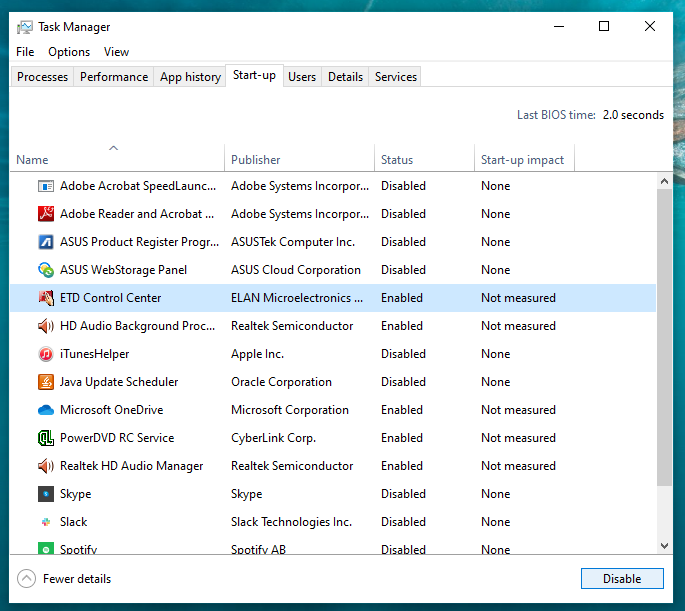
This means these programs will no longer automatically start when you power up your computer — saving your laptop or computer a bit of bother!
Top tip technical difficulty rating: ⭐⭐
Uninstall software that’s taking up lots of space
Your computer can come preloaded with many programs and applications that you’ll never use but consume a lot of disk space — or you can simply forget that you once installed that big, storage-sapping app.
Freeing up space by uninstalling programs that you don’t use is not only good housekeeping but can boost your PC’s speed — if your hard drive memory is too full, it can hamper performance, limiting your system’s ability to perform a number of roles.
Head over to the Control Panel (on most Windows machines, you can search ‘control panel’ in the search bar at the bottom of your interface, next to the Start button). Then, choose Programs and then Programs and Features. Are there any you know you don’t need? If so, select them and then choose Uninstall.
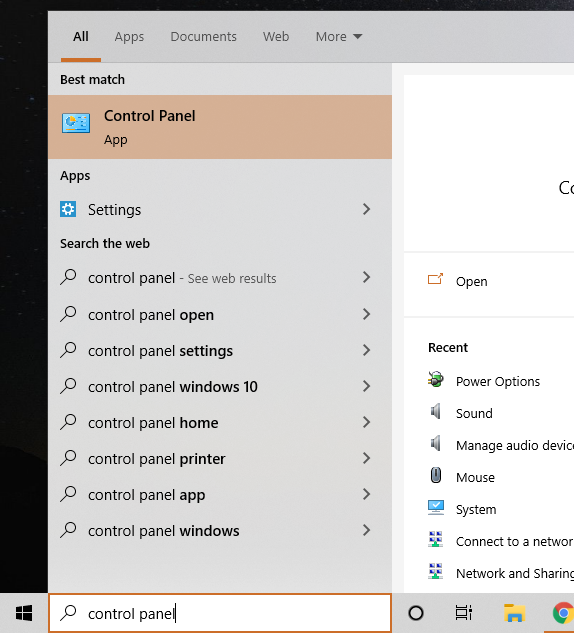


(By the way, whilst you’re in Programs and Features, you might want to check out the Turn Windows features on or off button, usually at the left hand side. Deselecting any unnecessary components can grant speed improvements, but be careful to not disable anything essential.)
Unsure on whether a certain program should be deleted, or feature disabled? A quick Google search can help you to discover more, or you could quickly message our team of IT experts to ask.
Top tip technical difficulty rating: ⭐⭐
Delete files you don’t need (or store them on the cloud)
Just as programs have the potential to slow down your PC, so do files.
Having too many files — documents, photos, music files and more — stored locally (on your physical computer, rather than on a cloud-based data drive storage) can clog up your hard drive disk space and cause your machine to operate at sub-par speeds.
Clearing out your documents folders, or moving them into the cloud, can free up your storage. Be sure to also clear the recycle bin, as they can live on in there.

To see which are the troublesome files, search ‘storage’ in the search bar (usually at the bottom of your interface, next to the Start button on your Windows device) and select Storage settings (sometimes called Storage usage).
Here, you’ll have an overview of what’s taking up space, and what could be deleted. Is your machine running at maximum capacity?
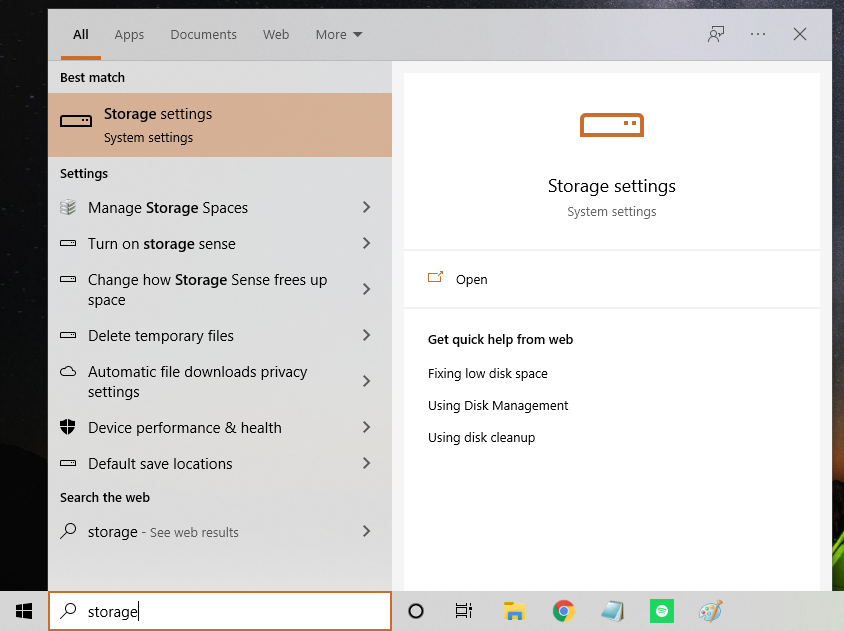

Make sure to not delete any crucial files — again, our team is always on hand to help advise if you need a helping hand knowing what’s safe to delete, or how to get started with the cloud!
Top tip technical difficulty rating: ⭐⭐
Try a manual disk cleanup
Following on from the above, you also have the option to run a ‘cleanup’. Search for ‘administrative tools’ in the search bar next to the Windows Start button. Click the result and there should be a Disk Cleanup option. When selected, this will present you with a list of types of files you may want to remove.
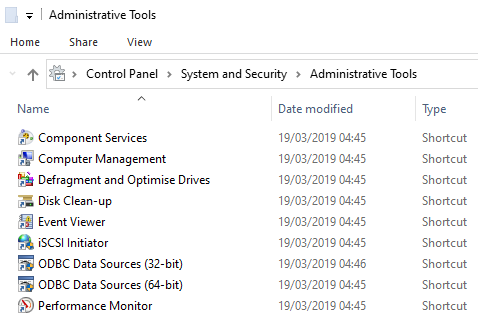
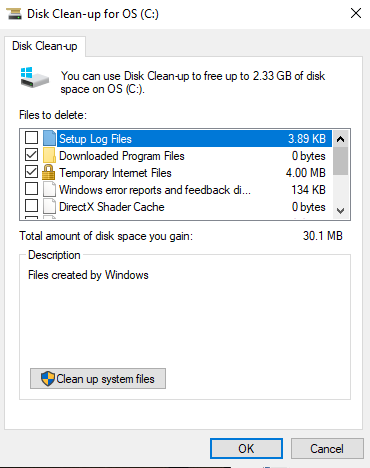
Top tip technical difficulty rating: ⭐⭐⭐
(our team of IT experts are always on hand to help, advise and assist!)
Check your power options
Windows computers give you the option to select a ‘power plan’, a set of rules for how your device manages and consumes power.
On most computers, the three schemes you’ll see are Power saver, Balanced and High performance, although some devices can show different options.
By default, this is usually set to Balanced — but selecting High performance (or your machine’s variation of this) might give your computer the added boost it needs to perform a little bit faster, perhaps at the expense of slightly higher battery use.
To access these plans, click the search box next to the Start button and search ‘power plan’ and then select Choose a power plan. See if swapping things up helps you to eke out some speed improvements from your device!

Top tip technical difficulty rating: ⭐
Tweak your performance options
Recent versions of Windows can come with animations and effects that whilst looking pretty, may put the dampers on your PC’s performance. See if it makes a difference to disable some of them.
Head to Control Panel, System and Security, System and then choose Advanced system settings and Performance. See if selecting ‘Adjust for best performance’ makes a difference to the speed of your desktop or laptop.
Top tip technical difficulty rating: ⭐
Keep on top of operating system updates
Ensuring you’re using the latest version of your operating system on your computer is best practice for security, but can also grant performance gains.
Windows frequently releases updates to patch up any cybersecurity flaws as well as introduce new features that keep your machine running at peak performance.
To see whether there are any updates available, search ‘windows update’ in the search bar (usually at the bottom of your screen) and select Windows Update settings, then Check for updates.

The same applies to any programs you use on your computer — updates can usually be found in the apps or by searching online.
Top tip technical difficulty rating: ⭐
Check your browser and internet
Over time, as you visit web pages, you build up a bank of temporary internet files. These are intended to help you load pages faster as you revisit them as well as provide a personalised browsing experience, but they have the potential to gradually hog disk space. Most browsers will have an option to clear cache and cookies under Settings.
Also, make sure you have the latest version of your browser installed. This differs from browser to browser, but any available updates can usually be located under File and then About.
You might also want to make sure you disable any unnecessary browser plugins. Again, locating this differs depending on whether you’re using Microsoft Edge, Google Chrome, Mozilla Firefox or another browser. In Edge (the default Windows browser), these are located under File and then Extensions.
Be sure it’s not a dodgy internet connection causing your speed snags, either. We’ve listed our top tips for improving your WiFi speed over on another Learning Hub post!
Top tip technical difficulty rating: ⭐⭐
Check for malware
Cyber criminals often use ‘phishing’ attacks to install malware — malicious software — on your computer. As well as potentially damaging your device, these unwanted programs can consume very large amounts of your memory and processing power, leaving precious little for legitimate tasks.
The motivation of these online scammers are usually financial. Staying safe can be as easy as following our top tips for spotting a phishing attack or online scam.
But if you think you might already have some sinister software on your system, run a scan using your machine’s Windows Security app (previously known as Windows Defender; Windows Defender is now the name of the built-in antivirus program within Windows Security).
Search for ‘windows security’ in the search bar next to the Start button. Once open, click Virus & threat protection from the menu and run a quick scan.
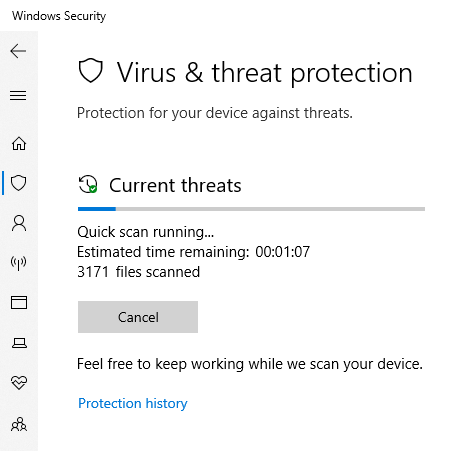
Malware detection by Windows’ built-in antivirus features has improved substantially in recent years.
But if you’re looking for additional protection, there are also some excellent paid antivirus software out there. Get in touch with our team if you’d like a helping hand with your home or business antivirus strategy!
Top tip technical difficulty rating: ⭐
Check you’re not overheating
Over time, our devices can become clogged with skin, hair, dust, food or other miscellaneous particles. This can restrict airflow through your device and hamper the cooling process.
In response to this excess heat, many types of computer will reduce the speed of the processor to accommodate. Giving your computer a gentle dust or clean — and ensuring the fans are flowing freely — will help to keep things cool and running smoothly.
Top tip technical difficulty rating: ⭐
Ensure your devices are optimised
In some older types of hard drives, when there’s not enough space on your hard drive for a whole file, ‘fragmentation’ occurs — files are broken down into smaller pieces, which your computer has to take time to search for when performing actions. ‘Defragmentation’ is about reversing this process and consolidating these smaller pieces.
The upside? Potentially enhanced performance and speed.
These types of drives have now been replaced with solid state drives (SSDs). You don’t defragment these, but 'trim' them instead. Windows is intuitive and sets the right type of optimisation for you. Furthermore, you can schedule this to be done automatically — once a week is enough.
So, unless you’re on a much older device, it’s not something you’ll likely have to be concerned about. However, to run a manual optimisation, search ‘defrag’ or ‘optimise’ in the search box and choose the Defragment and Optimise Drives app. then click Optimise.


From here, you can set scheduled optimisation. Click Analyse, and for anything above 5%, consider clicking Optimise.
Top tip technical difficulty rating: ⭐⭐
(our team of IT experts are always on hand to help, advise and assist!)
Consider adding more RAM, upgrading your hard drive or increasing processor speed
And no, we’re not talking about the woolly, horned animals! Random access memory (RAM) is what your computer needs to perform everyday tasks, helping the processor in its operations. It stores information you’re currently using so it can be accessed quicker.
Having adequate amounts of RAM enables you to jump between tasks at optimal speed. Similarly, not having enough can make everyday IT sluggish. Faced with the demands of today’s all-singing, all-dancing apps and programs, some older machines can suffer from a lack of RAM.
If this sounds like you, one solution is to add more. There are a number of guides for adding more RAM online, but could also contact our team of IT experts if this is something your machine might benefit from.
Another way to enjoy speed improvements is to upgrade your hard drive or increase your processor speed. We won’t go into too much detail about that in this blog, but again, our team’s always on hand to discuss any upgrades you might want to consider.
Top tip technical difficulty rating: ⭐⭐⭐
(our team of IT experts are always on hand to help, advise and assist!)
So, did that help?
Sometimes, eking out performance improvements from your laptop or desktop can be as simple as trying out a couple of the above tips and tricks. Other times, you might need an expert to take a look.
Our team of IT engineers have over two decades’ experience helping home users and businesses of all sizes and sectors to enjoy a speedy, seamless IT experience. Whether you’d like us to take a look at a few device repairs, give your tech a thorough health check or handle any other aspect of your IT — feel free to leave it to us.
Even with all the performance tweaks and best practice in the world, very old hardware simply doesn’t have the capabilities of coping with the demands of today’s operating systems, apps and websites. You might even need to bite the bullet and invest in a new computer or laptop — and our team will always provide an honest assessment.
It’s our mission to make IT stress free and simple. Get in touch by clicking the button below, by phoning 03303 800 100 or by emailing contactus@weareyourit.co.uk.



